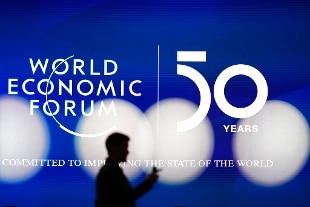- Iraq, Oxfam: thousands of people to the extreme, now risk losing humanitarian aid
- Oxfam: 70 million refugees, rich countries and Italy cannot ignore
- Oxfam: "Water that saves lives"
- Oxfam. Scroungers getting richer, while 10 thousand people a day die because they are without treatment
Share
January 20, 2020 The richest 1% of the world's population holds more than double the net wealth owned by 6.9 billion people. Otherwise said, the share of wealth of the poorest half of humanity - 3.8 billion people - does not even reach 1%.Worldwide, the 2,153 Scrooges on the Forbes list hold more wealth than 4.6 billion people. Almost half of the world's population lives on less than $ 5.5 a day. The wealth of the 22 wealthiest people is greater than the wealth of all African women.
'Economic inequality is a phenomenon now out of control', Oxfam sums up, in the report that takes the picture of the disparities that pervade the planet, published at the World Economic Forum summit in Davos. A place where, by definition, the top of the world's economic, financial and political power meets and the super-rich are at home.
The collapse of the tax burden on them contributed, thanks to the reduction of the tax rates, but also to deliberate tax abuses. Only 4% of global tax revenue comes from wealth taxes and various studies show that the super-rich evade up to 30% of their taxes. Between 2011 and 2017, while average wages in the G7 countries increased by 3%, the dividends of wealthy shareholders increased by 31%.
Italy is certainly no exception
Based on data from Oxfam, which draws on Credit Suisse's World Wealth Report, the richest 10% of the population in the Peninsula has more than 6 times the wealth of the poorest 50%. The share of wealth in possession of the richest 1% of Italians exceeds that held by the poorest 70%. At the end of the first half of 2019, against a net national wealth of 9.297 billion euros, the richest 20% of Italians held almost 70%, the next 20% held 16.9%, leaving 60 Poor% 13.3%. The top 3 billionaires in the Forbes ranking have a net wealth (37.8 billion euros at the end of June 2019), greater than those 6 million people who make up the poorest 10% of the Italian population. In 2017 (last year covered by Eurostat) 20% of the highest income earners held 40% of the total income. The distances between rich and poor have widened: in 20 years the share of wealth held by the top 10% has grown by 7.6%, while the portion of the poorest half of Italians has reduced by almost 37%. Imbalances have increased since 2000, as recorded by the Gini index (which measures disparities) increased by 7 points in 20 years. In Italy, but also elsewhere, the rich are above all children of the rich and poor children of the poor.
Socio-economic conditions are inherited from generation to generation. A third of the children of poorer parents, in terms of property, is destined to remain firm at the lowest step of the socio-economic scale (the one in which the poorest 20% of the population ranks), while 58% of those i whose parents belong to the richest 40%, maintains a top position. Furthermore, young Italians have to deal with a profoundly unequal market, characterized by great precariousness. Over 30% of young people employed earn less than € 800 gross per month. 13% of the under-29s of the Peninsula are in a condition of working poverty. A situation that combined with the disconnect between the demand and supply of skilled labor has for years forced many young graduates to leave the country.

